Excerpts from Jim Conrad's
Naturalist Newsletter
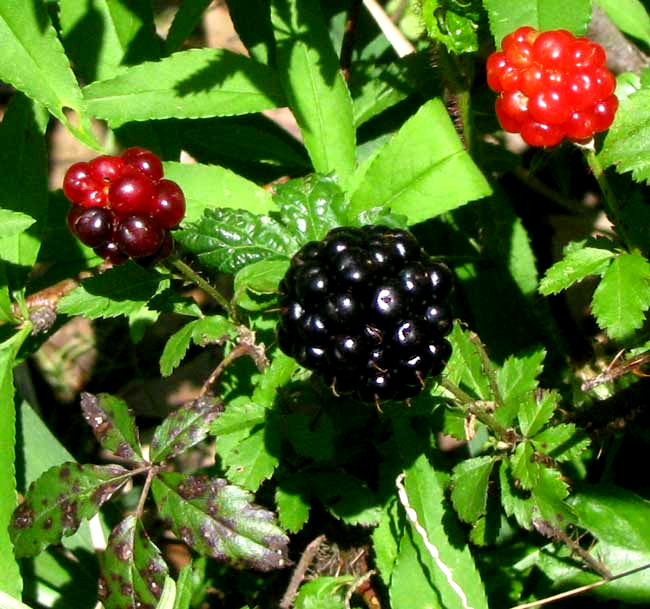
from the April 8, 2012 Newsletter issued from the forest a few miles east of Natchez, Mississippi, USA; elevation ~400ft (120m), ~N31.47°, ~W91.29°
SOUTHERN DEWBERRIES
In an occasionally mowed lawn here a couple of years ago a fruit tree was set out, protected from the deer by a circle of fence wire. The tree died but the wire remained, enabling an island of weeds to thrive in an expanse of mowed grass. Among the weeds is what's seen above.
Those are fruits of the Southern Dewberry, RUBUS TRIVIALIS. I call them fruits instead of berries because technically the red and black objects in the picture are "aggregate fruits," as diagrammed below:
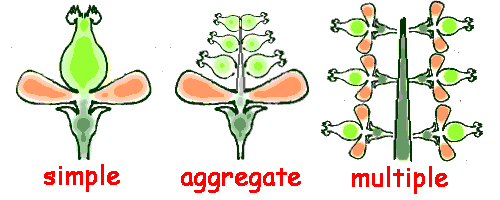
That picture diagrams a cross-section of various flower types. The pink parts are petals, the yellow-green parts are female pistils, each comprising stigma, style and ovary. You can see that in aggregate fruits several female pistils occur in a single blossom. That's what happens in dewberry, blackberry and raspberry flowers. Each pistil develops into a "druplet" -- one of the juicy, spherical parts of the aggregate fruit we call a dewberry.
So, in our dewberry picture, each druplet in the fruit is a mature pistil, and that's a neat close-up of one below:
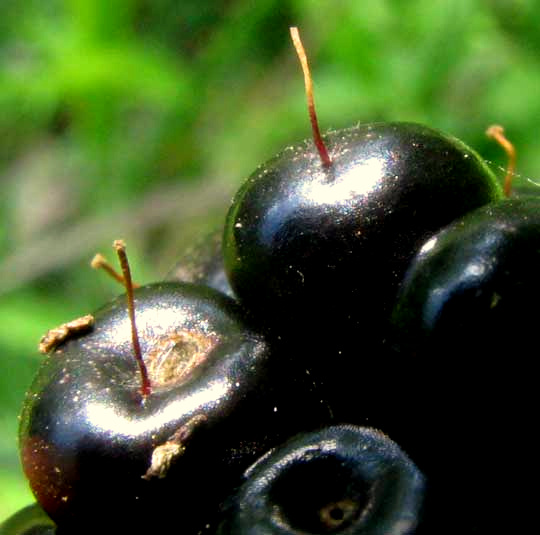
In that picture the brown, slender items arising in the center of each druplet are dried-up styles topped by stigmas.
A fast-growing Southern Dewberry shoot-tip is shown below:
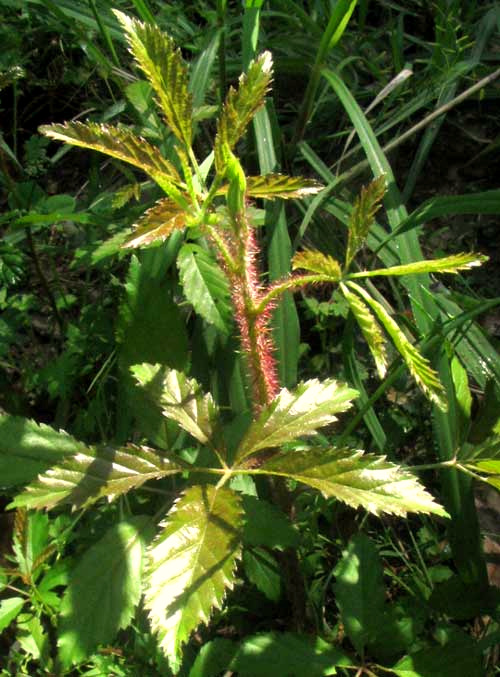
There you can see that the dewberry's leaves are "digitately compound," like the five digits on a hand, and that the stems are sublimely stickery. A surprisingly pretty close-up of this stickeriness is shown below:
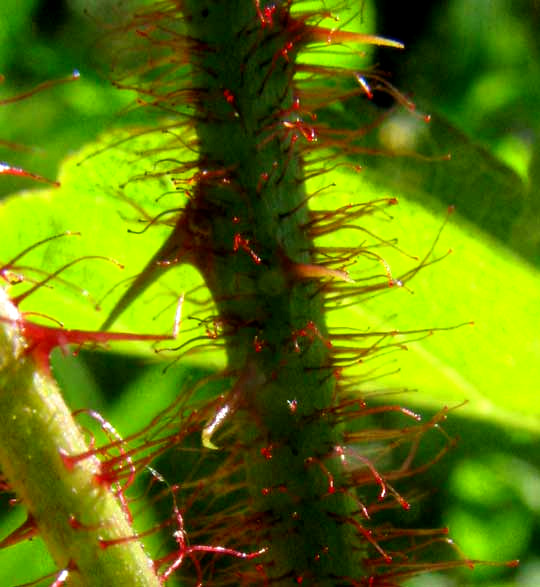
Note that the spines are of two kinds, and that the slender ones are gland tipped. These features help distinguish Southern Dewberries from several other dewberry species.
In the past I've feasted royally on these dewberries. Sometimes large expanses of them provide gallons and gallons of very large, succulent, sweet fruits. However, the ones available here now are fairly tasteless, maybe because of the heavy rains we've been having. When it dries up a bit, I'll be looking for them again.
from the March 24, 2013 Newsletter issued from the valley of the Dry Frio River in northern Uvalde County, southwestern Texas, on the southern border of the Edwards Plateau; elevation ~1750m (~5750 ft); N29.62°, W99.86°; USA
DEWBERRY FLOWERING
Most of the landscape here is too dry for dewberries, but this week I was gratified to see along the little Dry Frio River's moist, weedy banks a few Southern Deweberries flowering, as shown below:
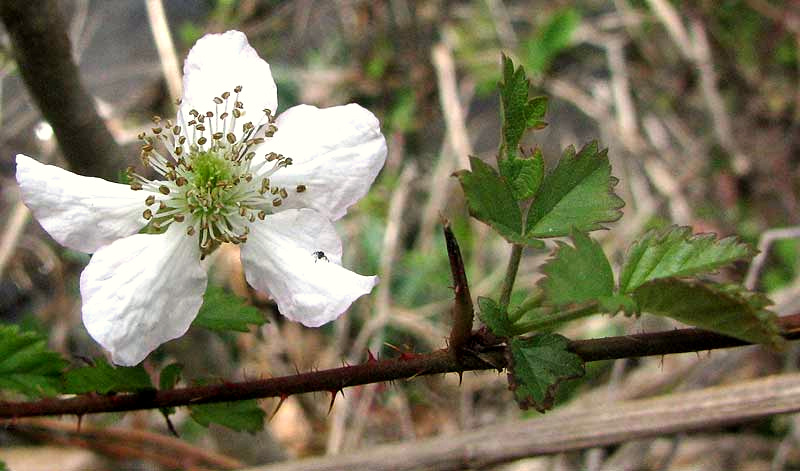
We're at the western extreme of Southern Dewberry's distribution, which occurs throughout the US Southeast. Around here it's the only dewberry species but in much of the Southeast there are other species. The Southern Dewberry differs from those by its stems bearing not only thick-based, slightly curved spines, which several other dewberry species also bear, but also shorter, thinner, straight spines tipped with tiny, spherical glands.